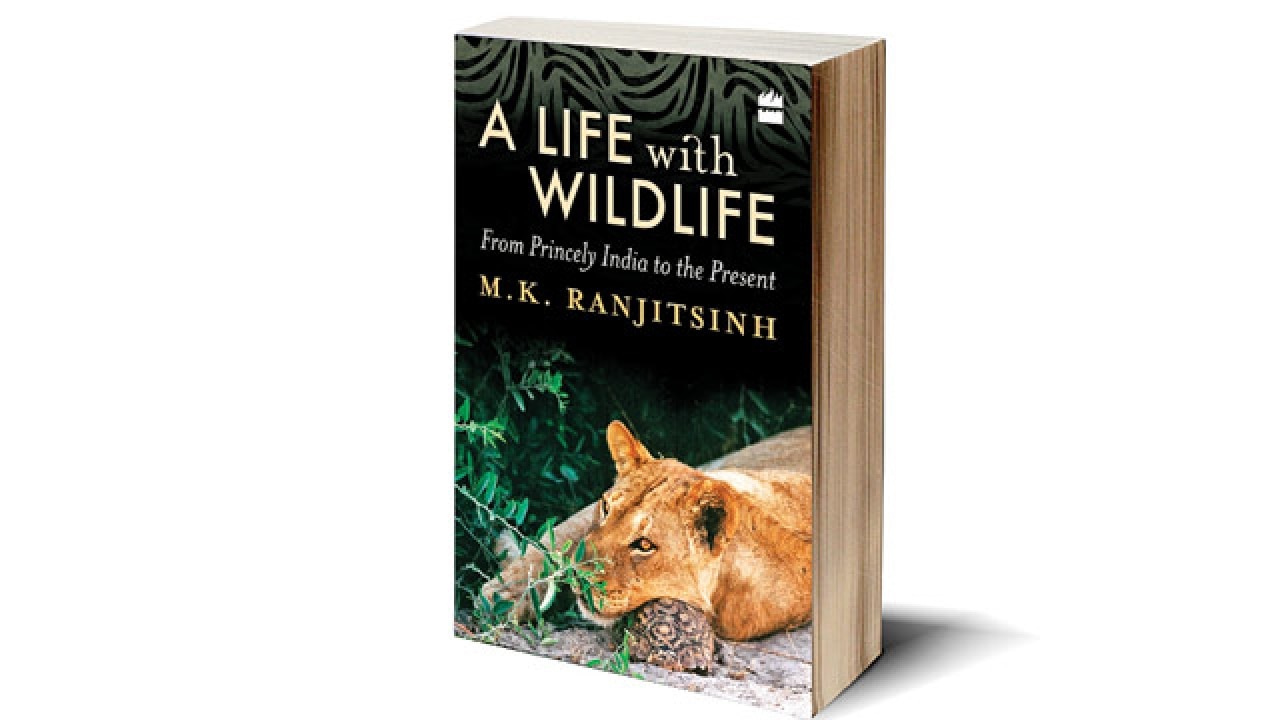
A tunnel below the victory tower that was built by MK Ranjitsinh's grandfather atop the Ranjit Vilas Palace in Wankaner, leads to a pillbox hideout with sliding shutters and a removable wooden roof. It is from here, Ranjitsinh writes, that as a child he would watch with awe the leopards that Wankaner, his family's principality, was famed for. After one kill, he remembers, the male leopard made way for the female and cubs to eat first. His father would test his ability to identify the gender of the gorgeous cat from its call, he recalls, while the 'pugees' employed by his relatives who held vast tracts of forest land in Rajasthan, would be able look at pugmarks and tell whether the leopardess was merely 'full-bellied' or pregnant. Elders would share touching and fabulous stories too. Sometimes, on morning drives, he would spot as many as 400 blackbucks.
Having been born at time when wildlife was abundant and having had such privileged access to and knowledge of the wild, Ranjitsinh would have to be truly hard-hearted not to fall in love with it.
His latest book A Life with Wildlife talks about how in the pre-independence era "there was more wildlife in princely states than in British territories because hunting was personally controlled by the rulers". Supporting this paradoxical view with statistics and anecdotes – some of them about how skilled hunters became ardent conservationists – he adds that there was more wildlife in states where the rulers were hunters, such as his, than in those where they weren't! How's that possible? The machismo associated with vanquishing big, powerful game animals meant that those who hunted them guarded their forests strictly. But excessive hunting also led to unforgivable damages, Ranjitsinh admits. On the other hand, conservation by vegetarians in India, he finds, has been passive with the exception of the Bishnois, Buddhists and a few other communities.
Passionate about nature since adolescence, Ranjitsinh became the architect of India's first wildlife policy, Wildlife (Protection) Act in 1972. In the decades since, he's created more wildlife sanctuaries and national parks in India than anyone else, held several high profile positions in the Indian government as well as IUCN, UNEP and post-retirement, led projects for non-governmental organisations. What comes through in his account of his extraordinary journey is his perseverance and ability to play the right cards, without loosing his sense of humour; and immense energy.
The book also recounts Ranjitsinh's thrilling experiences of animals in the country and outside, accounts of which are supplements with details of their geography, behaviour, history and man-animal conflict. If there's a fault to pick, it's that with better editing, the narrative could have been made more riveting.
Ranjitsinh is as generous in his praise of those who've done great work as he is blunt about occasions where individuals or governments have failed, even controversially so. Indira Gandhi gets an entire chapter, detailing her consistently strong support for wildlife conservation - including how the Emergency was beneficial for the cause of conservation. Maneka Gandhi, gets a light mention. A digression, but equally interesting is the never-told-before account of Ranjitsinh as the city's commissioner at the time of the Bhopal gas tragedy.
Like beauty, this book will be different things to different readers – a guide to India's little-known fauna, introductory manual to wildlife conservation policies and their pitfalls, the autobiography of a man passionate about wildlife, or an augury of the future of India's biodiversity.
Without the political will to push the conservation agenda, something that Ranjitsinh implies has shrunk significantly after Rajiv Gandhi, he expects several Indian species to go extinct in the near future. But he gives us remedial measures, and points to a silver lining - a growing general environmental consciousness. Ranjitsinh leaves the read with two wishes: a 'ghar wapasi' for the Cheetah and that "no life form should go extinct in India, in the 21st century at least". We hope so too.